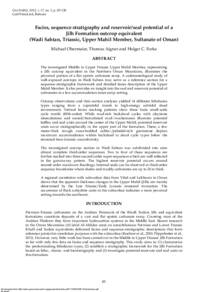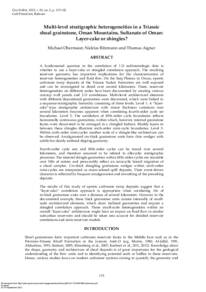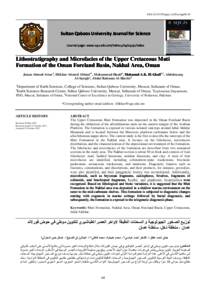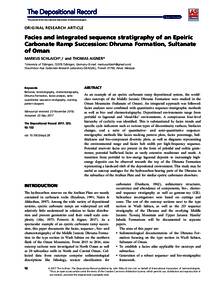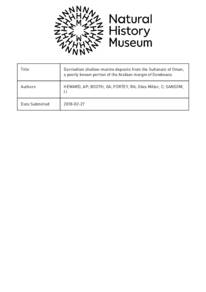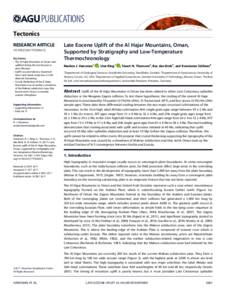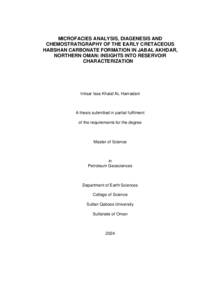Document
Facies, sequence stratigraphy and reservoir/seal potential of a Jilh formation outcrop equivalent (Wadi Sahtan, triassic, upper mahil Member, Sultanate of Oman).
Identifier
DOI: 10.2113/geoarabia170385
Contributors
Aigner, Thomas., Author
Forke, Holger C., Author
Publisher
Gulf Petrolink.
Gregorian
2012-07
Language
English
English abstract
The investigated Middle to Upper Triassic Upper Mahil Member, representing a Jilh outcrop equivalent in the Northern Oman Mountains, illustrates the proximal portion of a flat epeiric carbonate ramp. A sedimentological study of well-exposed outcrops in Wadi Sahtan may serve as a reference section for a sequence-stratigraphic framework and detailed facies description of the Upper Mahil Member. It also provides an insight into the seal and reservoir potential of carbonates in a low-accommodation inner ramp setting. Outcrop observations and thin section analyses yielded 14 different lithofacies types ranging from a supratidal marsh to high-energy subtidal shoal environment. Vertical facies stacking patterns show three basic small-scale cycle motifs (fifth-order). While mud-rich backshoal cycles with claystone intercalations and rooted/bioturbated mud-/wackestones illustrate potential baffles and seal units around the center of the Upper Mahil, potential reservoir units occur stratigraphically in the upper part of the formation. There, a few meter-thick trough cross-bedded oolitic-/peloidal-rich grainstone depicts maximum accommodation within backshoal to shoal cycle types below the erosional base-Jurassic unconformity. The investigated outcrop section in Wadi Sahtan was subdivided into nine almost complete third-order sequences. Two to four of these sequences are further stacked into three second-order super-sequences which are well reflected in the gamma-ray pattern. The highest reservoir potential occurs around second-order maximum floodings. Internal seals can be observed at third-order sequence boundaries where shales and muddy carbonates are up to 20 m thick. A regional correlation with subsurface data from Yibal and Lekhwair in Oman shows that the apparent thickness changes in the Upper Mahil (Jilh) are mainly determined by the Late Triassic/Early Jurassic erosional truncation. The occurrence of thick anhydrite units in the subsurface indicates a more proximal setting towards the southwest.
Member of
ISSN
1025-6059
Resource URL
Category
Journal articles

